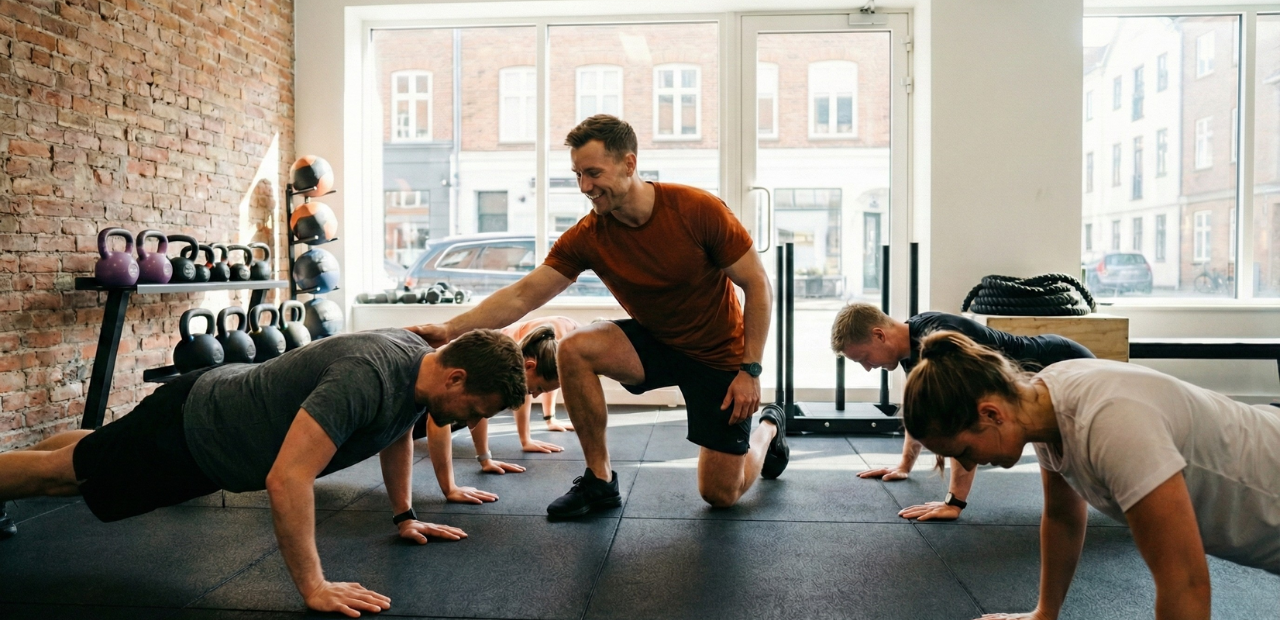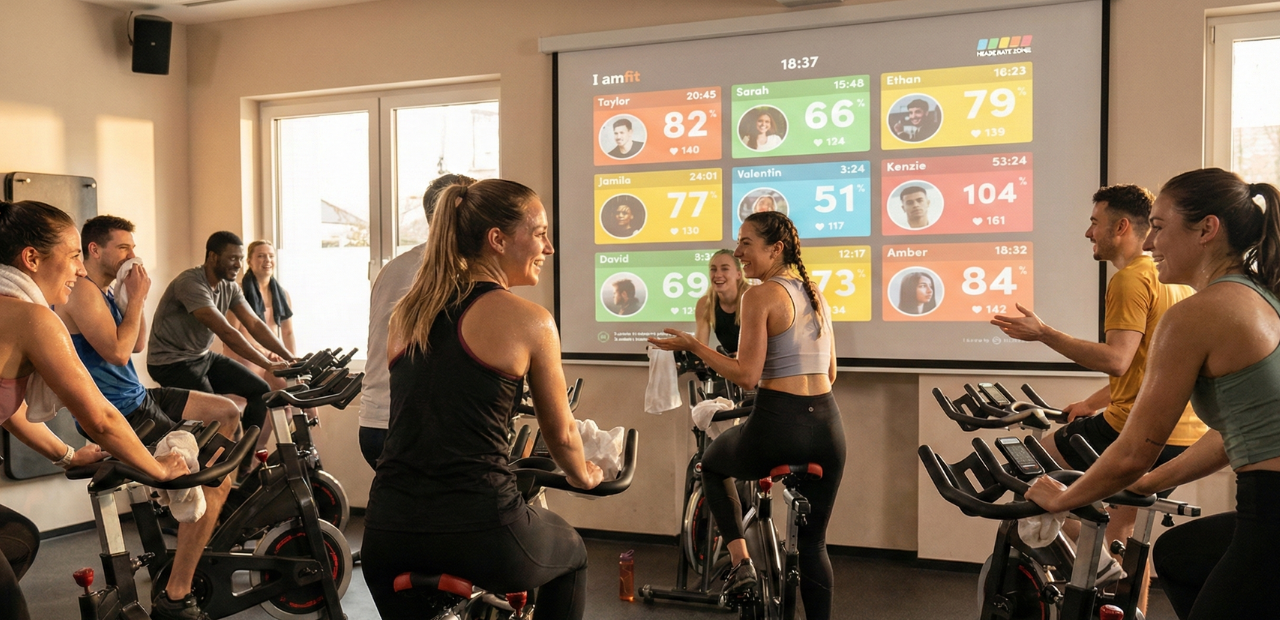In the world of fitness, just being certified is no longer enough. You have to develop your own style to stand out from the rest.
Your ability to lead and engage with your class members can make all the difference between a lackluster experience and a transformative one.
In this article, we will explore 10 tips for group fitness instructors that will help you become a good group fitness instructor and elevate your teaching skills to provide the best experience for your clients.
Tip 1: Cultivate Your Unique Teaching Style
Every great instructor has a unique teaching style that sets them apart from others in the fitness industry.
Embrace your strengths and personality to develop a personal brand that resonates with your clients.
Let your passion for fitness show through your energy, enthusiasm, and commitment to your class members’ success.
To cultivate your teaching style, observe other instructors and identify the qualities you admire in them.
Then, combine those qualities with your own to create a style that reflects who you are as a person and a professional.
Remember that authenticity is key—clients will respond positively to an instructor who is genuine and passionate about their work.
Tip 2: Master the Art of Class Design
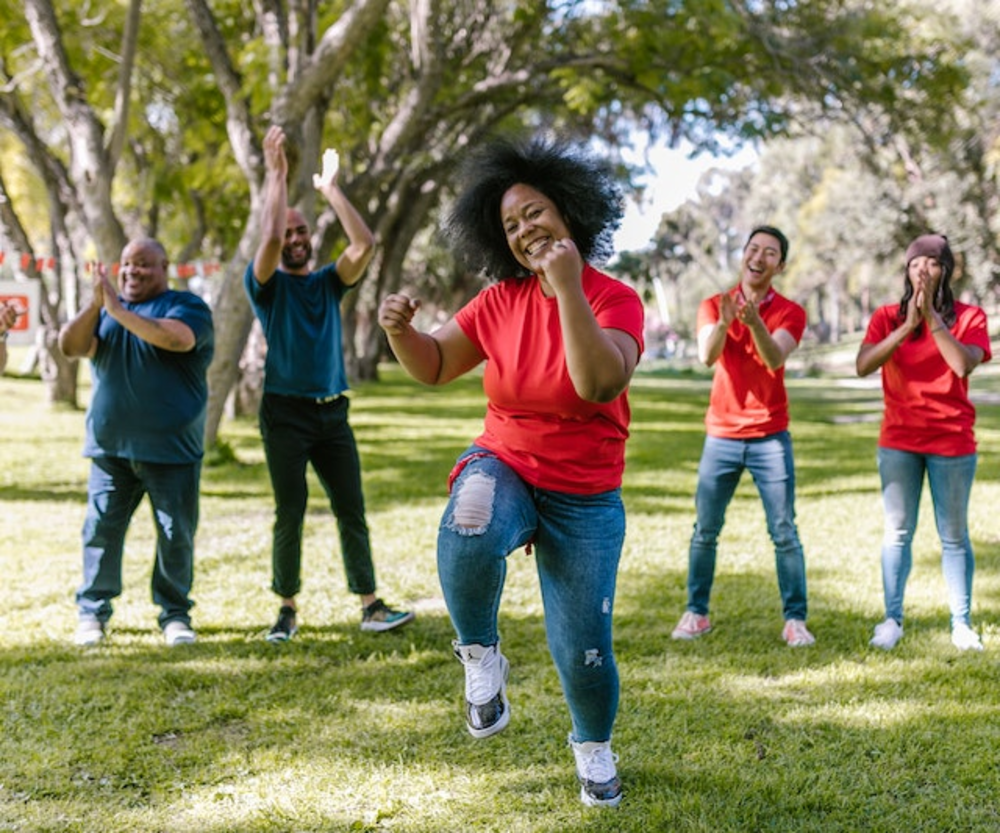
A well-designed group fitness class strikes the right balance between intensity, variety, and fun.
Strategically sequence exercises to challenge both beginners and advanced participants, ensuring that the entire class feels accomplished and motivated.
When designing your classes, consider the goals of your clients, the equipment available, and the time allotted for each session.
Start with a warm-up to prepare the body for exercise, followed by a mix of cardio, strength, and flexibility exercises.
Finally, add a cool-down to help participants recover and prevent injury.
To maintain interest, periodically introduce new exercises or variations on familiar moves.
Tip 3: Enhance Your Cueing Techniques
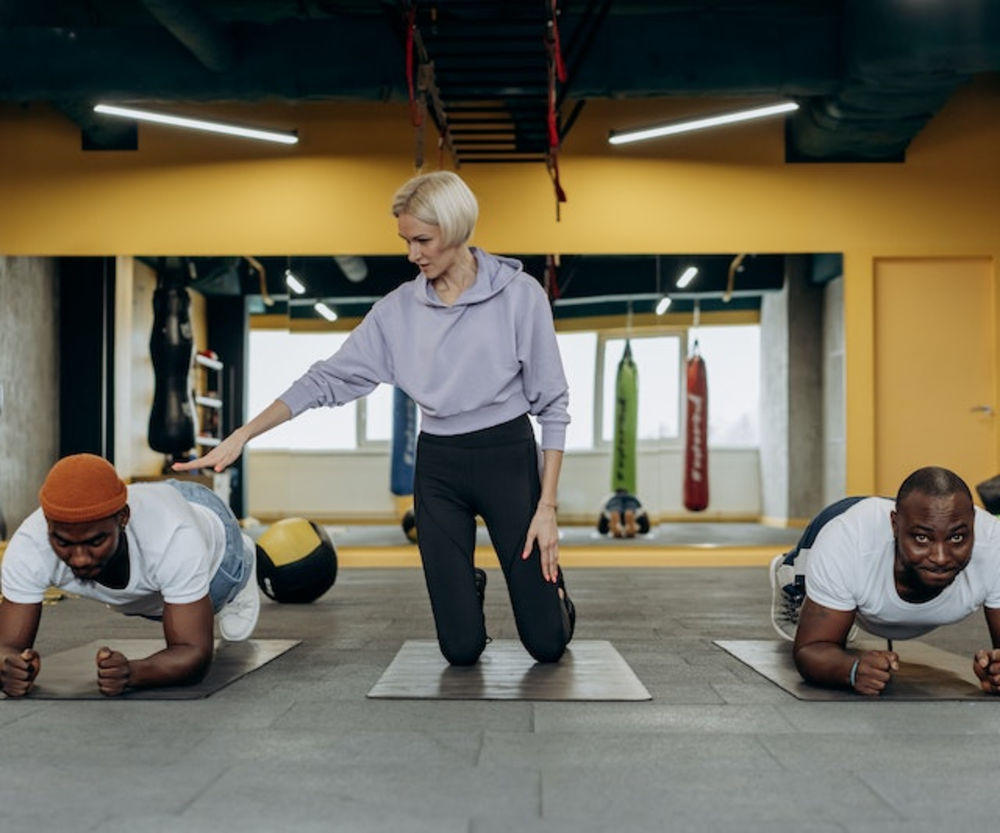
An essential skill for any group fitness instructor is the ability to provide clear, concise directions.
Give clear visual, verbal, and kinesthetic cues to help your class members understand and execute exercises with proper form.
Offer real-time corrections and positive feedback, ensuring that each participant feels supported and valued.
Visual cues involve demonstrating the exercise or movement yourself, while verbal cues require clear and concise instructions.
Kinesthetic cues involve guiding participants through the movement with physical touch, although it is important to obtain their consent before doing so.
Practice and refine your cueing techniques to create a seamless and enjoyable experience for your students.
Tip 4: Create an Inclusive and Supportive Atmosphere

One of the most critical aspects of teaching group fitness is fostering a welcoming diverse environment where all fitness levels feel comfortable and encouraged.
Promote a judgment-free zone by emphasizing modifications for less experienced students and challenging options for more advanced clients.
Cultivate camaraderie among your class members by facilitating interactions and celebrating group achievements.
Encourage participants to support one another, and recognize individual accomplishments during class.
Create opportunities for participants to connect before or after class, such as organizing social events or online communities where they can share their experiences and progress.
Tip 5: Utilize Music and Rhythm Effectively

Music can be a powerful motivator in fitness classes, setting the tone and energy for the entire workout.
Curate engaging playlists that resonate with your students and complement the exercises you’ve planned.
Synchronize movements to the beat, adjusting the tempo to match the intensity of the workout.
Remember, a great instructor knows that music is one of the most important parts of a fitness class. Because it helps to create an enjoyable and dynamic atmosphere.
Choose workout songs that align with the mood and intensity of your class, selecting tracks with a variety of tempos and genres to keep things fresh and engaging.
Be mindful of lyrics and content, ensuring your playlist is appropriate for a diverse audience. Update your playlists regularly to maintain interest and excitement in your classes.
Tip 6: Be Adaptable and Embrace Challenges

Whether you are a group fitness instructor or a personal trainer, you will likely encounter unexpected situations, such as equipment malfunctions, a sudden influx of new clients, or a participant who lacks focus.
Handle these challenges with grace and adaptability, demonstrating your ability to think on your feet and adjust your plan as needed.
Continuously learn and grow from these experiences, refining your teaching skills and expanding your toolbox.
Additionally, be prepared to modify exercises for students with injuries or limitations.
Offer alternative movements or adjustments to ensure that everyone in the class can participate safely and effectively.
Adaptability is a crucial skill for a successful fitness instructor, as it allows you to meet the diverse needs of your students and create an inclusive environment.
Tip 7: Encourage Goal Setting and Track Progress
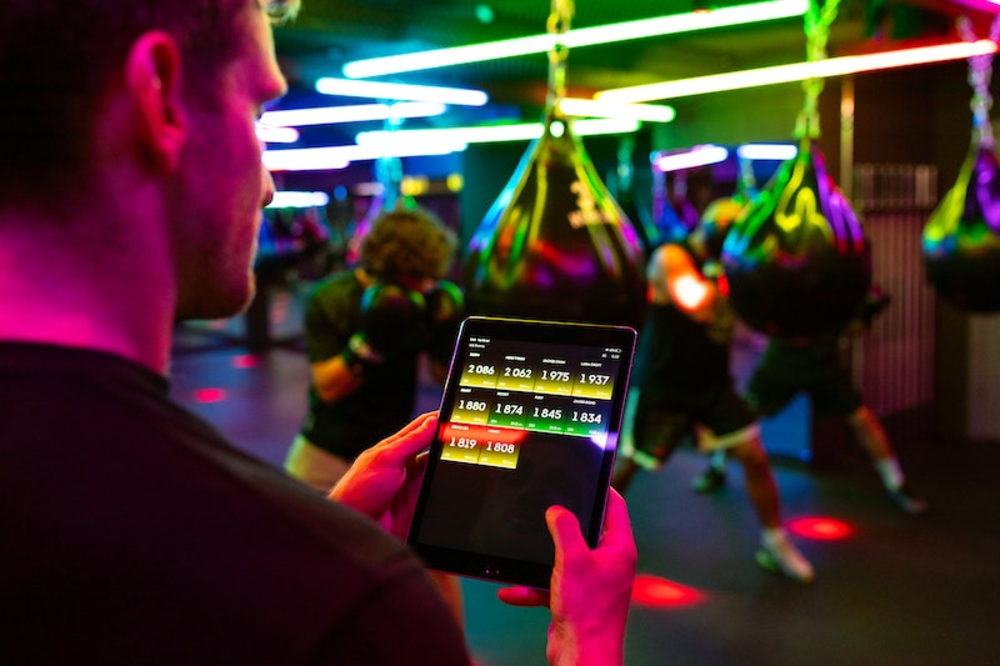
Help your class members set realistic fitness goals and provide the tools to measure and track their progress.
Celebrate milestones and achievements, reinforcing the positive impact of your group fitness classes on their overall well-being.
By offering support and guidance, you can empower your students to take ownership of their fitness journey and see tangible results.
Consider implementing a system for tracking progress, such as a shared spreadsheet, an app, or a physical chart displayed in your fitness studio.
Encourage participants to document their goals, accomplishments, and personal bests, and use this information to tailor your classes to their needs and preferences.
Tip 8: Develop Strong Interpersonal Skills

Building trust with your students is vital for any fitness instructor. Actively engage with your class members, making eye contact and addressing them by name.
Listen to their feedback and exhibit empathy and understanding, demonstrating that you genuinely care about their success.
These connections will foster a sense of loyalty and commitment, ensuring that your students keep coming back to your classes.
To develop strong interpersonal skills, focus on active listening, empathy, and effective communication.
Attend workshops or training sessions on these topics, or seek guidance from mentors and peers in the fitness industry.
Remember that your role as a group fitness instructor goes beyond providing an effective workout—you also have the opportunity to make a positive impact on the lives of your students.
Tip 9: Stay Current with Industry Developments
Continuing education is necessary for fitness instructors looking to excel in their field. Participate in workshops, conferences, and online courses to stay updated on the latest trends, techniques, and research in the fitness industry.
Follow industry leaders and influencers to learn from their expertise and implement new ideas into your classes.
This commitment to lifelong learning will not only benefit your students but also enhance your credibility as a knowledgeable and skilled group fitness instructor.
Join professional organizations and attend networking events to connect with other fitness professionals, exchange ideas, and learn from their experiences.
Staying current with industry developments will enable you to offer the most effective and engaging classes possible, setting you apart from other instructors.
Tip 10: Give Back to the Community
As a fitness professional, you have the opportunity to make a positive impact on the lives of others.
Organize charity events, and fundraisers, or offer free or low-cost classes to underserved populations in your community.
Collaborate with local organizations to promote health and wellness and create a lasting legacy that extends beyond the walls of your gym or yoga studio.
By giving back to the community, you can inspire others to lead healthier, more active lives and demonstrate your commitment to making a difference.
In doing so, you will not only improve the well-being of your community but also enhance your reputation as a caring and dedicated group fitness instructor.
Additional Strategies for Success
Embrace Technology to Enhance Your Classes
Incorporate technology into your classes to keep them engaging and innovative. Utilize fitness apps, heart rate monitors, or virtual reality systems to add a new dimension to your workouts.
For example, using client management software such as Virtuagym’s Complete Coaching software can help you track progress, provide real-time feedback, and create an immersive and interactive experience for your students.
Develop Your Marketing and Networking Skills
To expand your reach and attract new clients, invest time and effort into marketing and fitness networking.
Utilize social media platforms to share class updates, success stories, and fitness content
Attend industry events to meet potential clients and collaborate with other professionals in the fitness community.
By honing your marketing and networking skills, you can grow your business and attract a diverse and dedicated clientele.
Foster a Growth Mindset
Maintain a growth mindset and view challenges as opportunities for learning and improvement.
Embrace feedback from your clients and colleagues, and continually strive to refine your teaching techniques and expand your knowledge.
By adopting a growth mindset, you demonstrate your commitment to personal and professional development and inspire your students to do the same.
Prioritize Self-Care and Personal Wellness
As a fitness professional, it’s important to prioritize your health and well-being. Ensure that you’re getting enough rest, eating a balanced diet, and engaging in regular exercise to maintain your energy and enthusiasm.
By modeling a healthy lifestyle, you can inspire your students to prioritize their self-care and make lasting, positive changes in their lives.
Conclusion
Becoming a standout group fitness instructor requires a combination of passion, skill, adaptability, and dedication to your students.
By following these powerful tips you can elevate your career and make a lasting impact on the lives of your class members.
Remember, the most important part of being a successful group fitness instructor is genuinely caring about the well-being of your students and doing everything in your power to help them achieve their fitness goals.
With hard work, perseverance, and a commitment to continuous improvement, you can become the kind of instructor who inspires and motivates others to lead healthier, happier lives.



